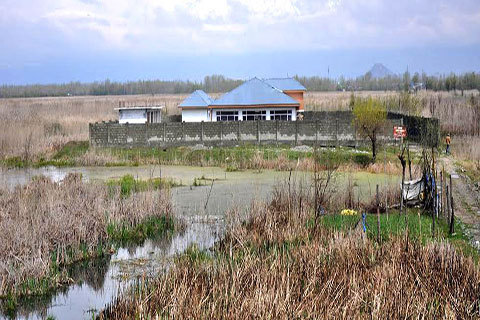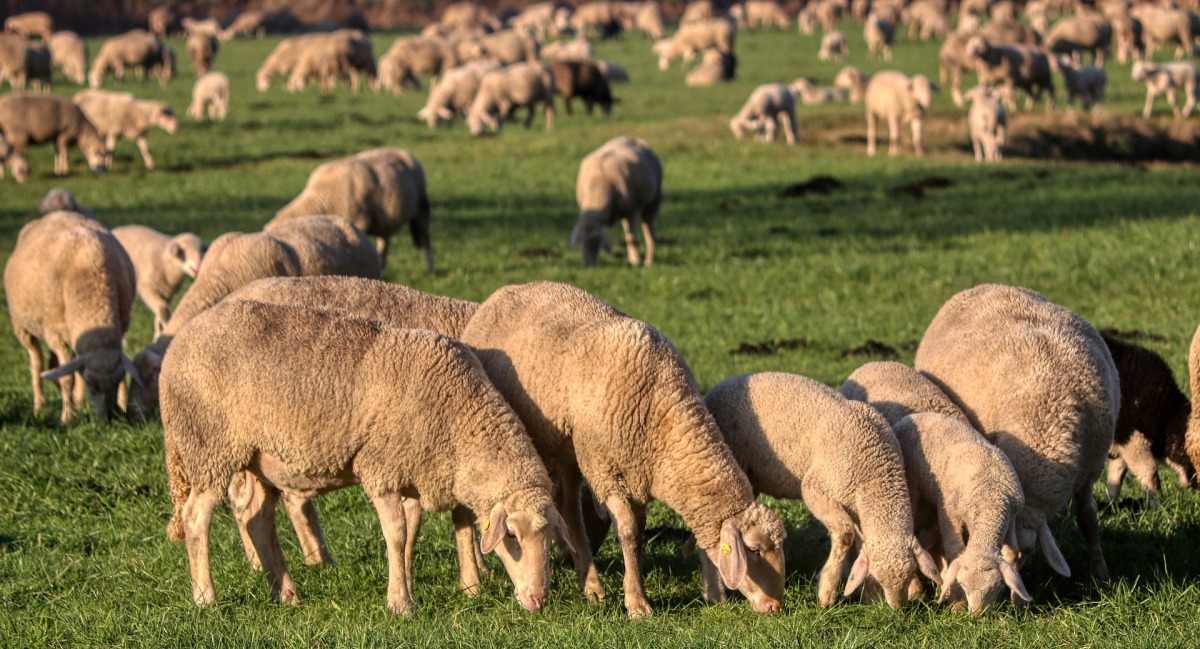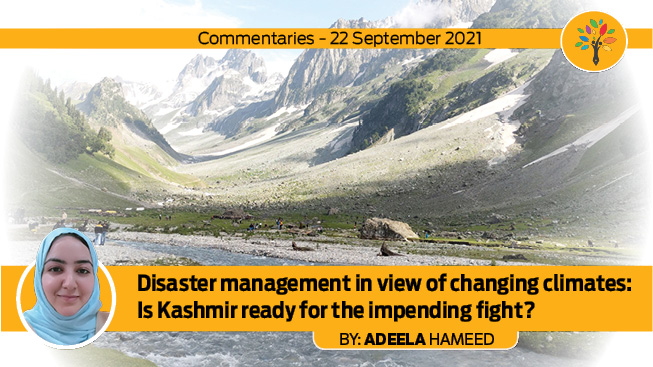Wetlands form an indispensable part of the natural water systems that are capable of preventing flood-like disasters. Above all, these vulnerable ecosystems are necessary for the survival of diverse flora, fauna, and, naturally, of humans as well.
Kashmir valley, situated in the north-western Himalayas, is home to a vast number of wetlands, some of which have disappeared in the last few decades alone. Urbanization is one of the major factors leading to the decline of these natural flood sponges. That is to say, the majority of flood basins in and around Srinagar city and wetlands of ecological importance around Dal Lake have been gradually diminishing due to urban expansion. And areas like Babademb, Khushalsar, Shallabug, Narkara, and Hokera, located within and along the borders of Srinagar, have been transformed into major residential areas.
The population of Srinagar city as per the 2011 census was 12.2 lakh with the number projected to cross the 23.5 lakh mark by 2021. With this expected increase in the population, the city residents are starting to prefer quiet and uncongested areas for housing, eventually occupying ecologically critical areas by massive landfilling.
Survey of India Topo Sheets (1971) and Landsat-ETM (2010) claim that Srinagar’s wetlands, spread over 13,425.90 hectares in 1911, had shrunk to 6,407 hectares by 2004. Thus registering an estimated loss of 7,018 hectares in 95 years.
Using case illustrations, this article attempts to explain human interventions happening since the last couple of decades that have led to a permanent diminution of Narkara, a semi-urban wetland located on the outskirts of Srinagar. The current status and level of encroachment of Narkara are also discussed in this article which takes us to a plan of action required to achieve efficient solutions for its restoration and protection.
Status of Narkara Wetland
A semi-urban wetland, with human settlements, agricultural fields, and tablelands called karewas as its catchment, situated on the outskirts of Srinagar, Narkara has shrunk to an awful extent in the last 50 years. The wetland reserve is now primarily an urban locale with the area under construction mushrooming almost 28 times in the past half-century. The built-up area covers nearly 37.12% of its total catchment.
The J&K government had proposed to build an Indian Institute of Management (IIM), Krishi Vigyan Kendra, and Sabzi Mandi over hundreds of kanals of Narkara. This was decided without getting approval from the Rakhs and Farms department (custodians of Narkara) and the Irrigation and Flood Control department, Srinagar. The government had also allocated about 100 kanals of the wetland for the construction of Transworld Muslim University. Moreover, an amount of Rs 101 crore is estimated to be required for filling the earth into the marsh. This comes from the detailed project report prepared by the Public Works Department (PWD) Kashmir. Henceforth, the IIT project has been stalled as the High Court issued a stay order on construction and urban development in and around Narkara. The PIL was filed by Environment Policy Group – an NGO based in Kashmir.
Need for protection of Narkara Wetland
The presence of wetlands in any region is beneficial to the community, both human and wildlife, in a number of ways. It must be understood that reckless urbanization, within Narkara and its catchment area, will not only affect the hydrology and ecology of this semi-urban wetland but increase the chances of flooding in its surroundings.
Wetlands in semi-urban or urban areas, such as Narkara, act as flood protection systems, water purifiers, and habitat to a large variety of migratory avian species.
Russian and Central Asian fowl species have recognized Narkara as their breeding ground during winters. Apart from these, Mallards, Indian Moorhens, Purple Moorhens and Dabchicks are also found in Narkara. But the expansion of residential and industrial areas has led to disruption of avian breeding cycles. Narkara is basically a detention basin. That is to say, it is designed to allow a 3-day detention period for surplus flood water arriving from the Doodhganaga stream. However, unreasonable filling and absence of breathing space has affected its buffering potential to hold back floodwater and stormwater run-off.
Plan of action
- The initial step to prohibit construction, in and along the periphery of Narkara, could be to employ local informants, either indigenous residents deriving a livelihood from the wetland or officers posted in the concerned department (Lakes and Waterways, Irrigation and Flood Control), to provide clues about illegal activities that have potential to cause harm to the wetland.
- Custodian of Narkara, the Rakhs and Farms department, has to be well informed too. It has to properly report illegal activities, whether construction of residential complexes, industries, educational institutions, or roads, for the protection of Narkara.
- Domestic garbage dumped along the bund of Narkara wetland by residents must be dealt with strictly. A solid waste disposal system provided by Srinagar Municipal Committee (SMC) to all residential colonies constructed along the peripheries is not in use. So, regular inspections and penalty, in case of non-cooperation, is a must.
- Inclusion of boatmen and fishermen community in the protection of migratory and local avian species during breeding seasons is essential. Bird hunting should also be banned.
- Rehabilitation and relocation of residents/commercial centers, especially the ones that have encroached upon the original wetland area, is mandatory. The government can assist all parties in relocation while making sure they comply.
- Dredging the canals leading up to Narkara also forms a necessary step towards protection and preservation of the wetland. Garbage-choked streams, nallahs, and canals must be properly cleaned to ensure ceaseless movement of surplus flood water during high rainfall season.
Conclusion
Nobody wants a repeat of the 2014 floods when residential areas, hospitals, schools, industrial complexes in and around Srinagar were flooded for more than 3 weeks. The Valley remained cut off from the rest of the world given all network stations were inundated. It’s horrifying to think history could repeat itself if these wetlands are not preserved. The reason is simple. Nature has the power to restore natural floodplains to their original state, if and when disturbed or encroached upon. It doesn’t look away nor does it maneuver away from human habitation. This incessant need to amass everything, to be in control, will cost us far more than we think.
References
- https://reliefweb.int/report/india/shrinking-wetlands-leave-jk-high-and-dry
- https://www.greaterkashmir.com/news/opinion/protect-the-narkara-wetland/
- https://www.downtoearth.org.in/news/urbanisation/wetlands-in-kashmir-shrinking-due-to-urbanisation-study-65963
- https://www.thekashmirmonitor.net/constructions-shrink-narkara-wetland-by-81-hectare/








Leave a Reply
You must belogged in to post a comment.